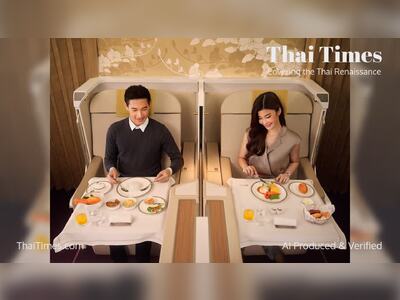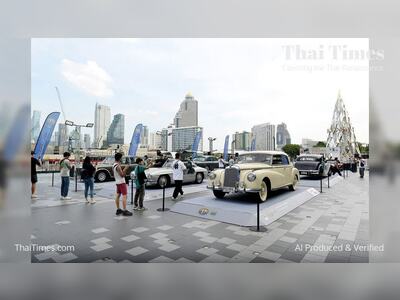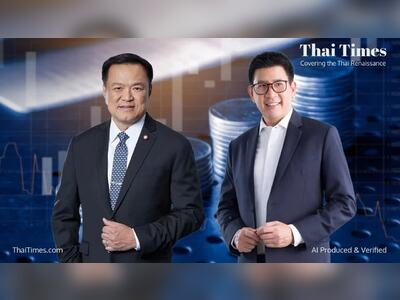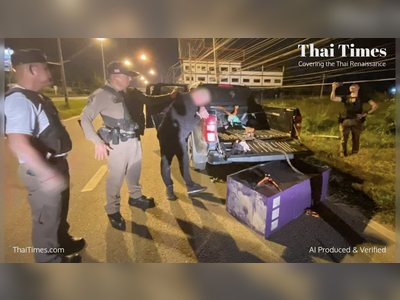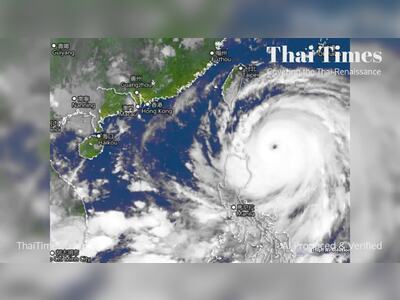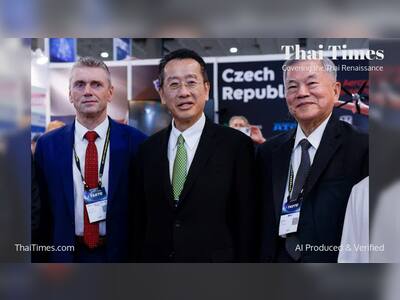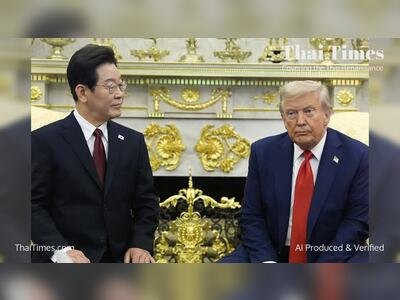0:00
0:00
Bangkok Promotes Street Art as Part of Soft Power Strategy
City officials and industry leaders highlight creative initiatives to enhance Bangkok’s cultural presence on the global stage.
Bangkok is intensifying efforts to harness cultural and creative industries as a form of soft power, with a particular focus on street art and urban design.
The city’s Deputy Governor, Sanon Wangsrangboon, participated in the second session of the National Soft Power Development Committee for 2025, where government officials, private sector leaders, and cultural experts discussed ongoing and future initiatives.
The meeting, chaired by Dr. Surapong Suebwonglee, Vice Chairman of the Prime Minister’s Policy Advisory Committee, took place at Vithes Samosorn Hall in Bangkok’s Ratchathewi district.
Discussions covered various creative sectors, including fashion, film, cuisine, and literature, with a focus on promoting Bangkok as a cultural hub.
In the fashion industry, efforts are underway to develop online learning programs and encourage designers to integrate Thai cultural identity into their creations.
The film sector is also receiving government support, with plans for drama and series festivals, as well as initiatives like the T EXPO, which aims to create alternative screening venues and establish new international film festivals in Thailand.
Additionally, short film production camps are being organized across three regions to foster emerging talent.
Culinary development was another key topic, with officials highlighting the ‘One Village, One Thai Chef’ program, which has already trained over 1,300 participants.
The project aims to position Thai cuisine more prominently in the global food industry.
Meanwhile, Bangkok is preparing to host the 53rd National Book Week at the Queen Sirikit National Convention Center in March, marking the largest edition of the event to date.
A significant aspect of Bangkok’s soft power strategy is the promotion of street art, particularly among young artists.
The initiative seeks to transform public spaces into creative hubs that attract global visitors while preserving the city’s cultural identity.
Pilot projects have been launched at key locations, including the Ong-Ang Canal, where walls have been transformed into artistic canvases, and Yaowarat, where canopies showcasing local identity have been installed.
Officials emphasized the role of creative economy spaces in revitalizing neighborhoods and fostering artistic expression.
The initiative aligns with broader efforts to position Bangkok as a leading cultural destination and to strengthen its influence on the global creative landscape.
The city’s Deputy Governor, Sanon Wangsrangboon, participated in the second session of the National Soft Power Development Committee for 2025, where government officials, private sector leaders, and cultural experts discussed ongoing and future initiatives.
The meeting, chaired by Dr. Surapong Suebwonglee, Vice Chairman of the Prime Minister’s Policy Advisory Committee, took place at Vithes Samosorn Hall in Bangkok’s Ratchathewi district.
Discussions covered various creative sectors, including fashion, film, cuisine, and literature, with a focus on promoting Bangkok as a cultural hub.
In the fashion industry, efforts are underway to develop online learning programs and encourage designers to integrate Thai cultural identity into their creations.
The film sector is also receiving government support, with plans for drama and series festivals, as well as initiatives like the T EXPO, which aims to create alternative screening venues and establish new international film festivals in Thailand.
Additionally, short film production camps are being organized across three regions to foster emerging talent.
Culinary development was another key topic, with officials highlighting the ‘One Village, One Thai Chef’ program, which has already trained over 1,300 participants.
The project aims to position Thai cuisine more prominently in the global food industry.
Meanwhile, Bangkok is preparing to host the 53rd National Book Week at the Queen Sirikit National Convention Center in March, marking the largest edition of the event to date.
A significant aspect of Bangkok’s soft power strategy is the promotion of street art, particularly among young artists.
The initiative seeks to transform public spaces into creative hubs that attract global visitors while preserving the city’s cultural identity.
Pilot projects have been launched at key locations, including the Ong-Ang Canal, where walls have been transformed into artistic canvases, and Yaowarat, where canopies showcasing local identity have been installed.
Officials emphasized the role of creative economy spaces in revitalizing neighborhoods and fostering artistic expression.
The initiative aligns with broader efforts to position Bangkok as a leading cultural destination and to strengthen its influence on the global creative landscape.
